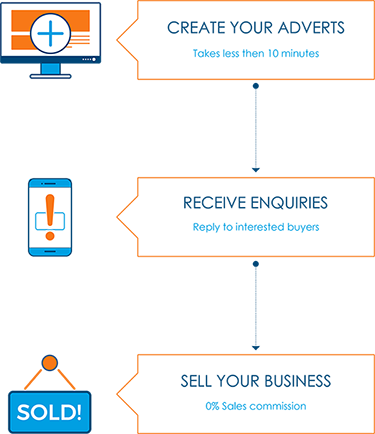It all starts with two pieces of bread. And a dream.
The UK’s most popular lunchtime meal is the sandwich – and why wouldn’t it be? It’s the meeting point of art and engineering, where careful planning meets creativity to general flavour. From the humble cheese sandwich, through gut-busting medleys of carbs and protein all the way to veggie, low-fat wraps, millions of us enjoy this easy, speedy, hand-held snack every day. The fillings have changed over the years – we’ve come a long way from Hilel the Elder and his herby invention in 110 BC – but the sandwich is never going out of style. And while some still make packed lunches, many of the UK’s workers pop out for a takeaway each day. All of which is great news for those budding business owners who have their eye on a healthy profit – so why not consider a sandwich shop?
As the working hordes flock from their desks on a weekday lunchtime, or the early-rising tradespeople stop for their bacon sarnie and builder’s tea, sandwich shops will invariably see a roaring trade. Clearly, then, when working out how to buy a sandwich shop, you need to make sure its location is right. Next to offices, commercial estates or high-footfall areas will see a regular stream of peckish punters. Tucked away, though, and you will need to offer something special to draw in your customers. Either that, or go to them by factoring in a mobile catering element to your sandwich shop business.
If you’re wondering how to buy a sandwich shop that’s already up and running, take a look at what has made it successful and busy for all these years. Then simply carry on doing the same. It’s understandable that a new owner might want to stamp their own personality on the business, or make some changes that they feel are beneficial. But the best advice would be to maintain what is proven to work in the first instance, then slowly implement improvements that are both tested and tracked.
On the other hand, you might be the person who works out how to buy a sandwich shop that is failing, and then turns it around. You could be a brave investor who wants to tackle a business that is underperforming. The upside to this, of course, is that you might snap up a bargain. The downside is that you might take on a turkey (as in a flop, not a sandwich filling!). Don’t discount this option entirely, though, as some businesses that have been run down can be turned around with fresh ideas, fresh ownership and, in extreme cases, with some fresh ingredients!
Key to the success of most businesses, of course, is to know your customers and give them what they want. If your sandwich shop is outside a train station and visitors are in a hurry, then you’d best have plenty of fillings readily prepared. Your time-poor customers won’t want to wait while you finely slice some tomato, carefully collect some basil leaves and delicately drizzle over some balsamic vinegar. They want to be in-and-out in minutes and quickly on their way to their next destination. Don’t overcomplicate things, either. If all your customers want is a simple bacon bap, then why offer them focaccia and fancy fillings?
Still keen, and want to know how to buy a sandwich shop? Then there’s lots of advice on how to do your due diligence right here. The same rules apply for a sandwich shop as they do for most premises-based businesses or going concerns – here’s the big three!
- Leasing: Know the lease terms and what you’re signing up to
- Staff: Have good staff in place and know your margins
- Equipment: Make sure the equipment you’re buying is fit for purpose and you’re not hit with hidden post-sale costs
Get all of this right, and this time next year you could be celebrating British Sandwich Week as the owner of your own sandwich shop.



